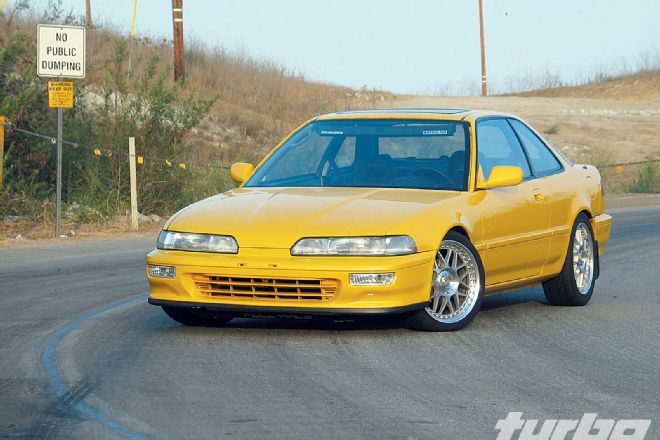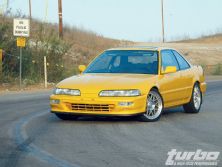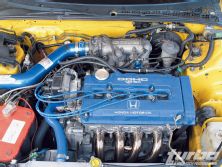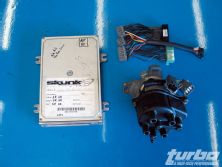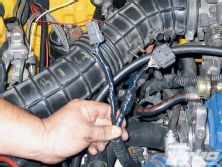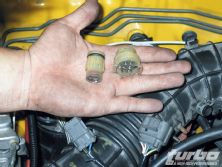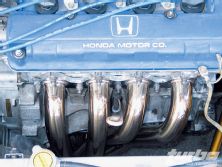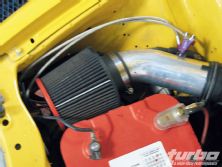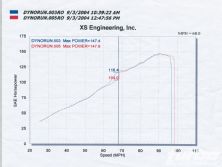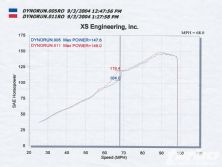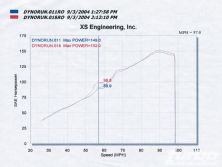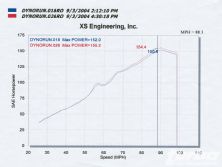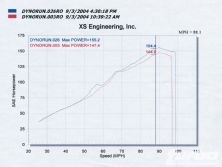The yellow Integra that graces these pages has been in my possession for more than 10 years. It was the first real car I owned. It wasn't a hand me down like the others but one that I bought with my own hard earned money. The Acura has had its ups and downs over the past decade including a stint of being covered in dust for six years. The Integra logged only 40,000 miles in the 10 years I owned it, and 30,000 of the miles were put on in the first year. The Integra has been modified in every which way and form, from high-compression normally-aspirated to direct-port nitrous to low-compression turbocharged. Last month I finally parted with my beloved bumble bee which was a surprise to all my friends and my wife who thought the car would never leave my grasp, but I am both happy and sad to say it has found a home with its new owner.
The new owner has decided to start a whole new saga with Project Bumble Bee with the help of Dynamic Autosports. Equipped with a Thermal 2.5-inch stainless-steel exhaust and Akimoto intake, the B16A was surprisingly quick for an engine that was built in 1989. On XS Engineering's Dynojet chassis dyno the Acura registered 147.4 horsepower to the front wheels. Incredibly high considering the engine only makes 160 horsepower at the flywheel.
The first modification was swapping in an OBD-1 ECU from a 1992-95 Honda Civic Si/EX (P28 ECU). The problem with OBD-0 ECUs is their lack to tuneability. In order to complete the swap we need to utilize a newer OBD-1 distributor, OBD-0 to OBD-1 harness conversion and four-wire Honda oxygen sensor. The OBD-1 distributor utilizes a different magnetic pick-up wheel compared to the older generation distributor. We were able to find a used 1994-'95 GS-R distributor at the local dismantling yard. The harness conversion was supplied by Dynamic Autosports, which carries a complete line of harness conversion kits for most Hondas and Acuras. With both harnesses in hand we followed the schematic we downloaded from the Internet and started cutting and splicing wires together. Crossing our fingers, the Integra fired up on it's first crank and was strapped back on the dyno.
This time around the engine peaked out at 147.6 horsepower. Barely any gains but we really weren't expecting any since the whole purpose of the swap was for better tuneabilty down the road. However, with the new P28 ECU we noticed the VTEC engagement was later in the rpm band resulting in a significant loss of power in the lower rpm levels. The old ECU engaged VTEC at 5500 rpm while the new P28 ECU wasn't kicking in until 6000 rpm. The engine was down 12.4 horsepower at 5900 rpm from the previous run. To remedy the late VTEC engagement a Field's SFC VTEC controller was purchased and installed. By setting the VTEC engagement point at 4900 rpm we were not only able to gain back the lost power we were also able to increase the output slightly over the original runs. By tuning the air/fuel ratio we gained an additional 1.4 peak horsepower but gained two to three horsepower through the mid- to top-end of the rpm range.
The first performance mod to be installed on the Acura was an AEM cold-air intake. Although the Integra was equipped with an intake from Akimoto the owner felt it was inadequate. Not expecting to see much of an improvement on the dyno the AEM system surprised all of us. Peak power rose to 152.0 horsepower but the largest gain was witnessed at 4900 rpm when VTEC engaged with a jump of 8.9 horsepower over the Akimoto system.
Up next was Dynamic Autosports 4-into-1 JDM-spec header. The fully-polished stainless-steel header features CNC-machined flanges and mandrel-bent polished stainless-steel piping. The header looks too nice to use. Since the Dynamic header utilizes a 2-1/2-inch collector we needed to fabricate a catalytic converter that would work with the header. When we removed the factory header and catalytic converter we noticed the cat was completely gutted. We installed a high-flow 2-1/2-inch catalytic converter. This time around peak power rose to 155.2 horsepower, a gain of 3.2 horsepower over the factory header with straight pipe. Impressive numbers considering we are running a fully functional catalytic converter compared to the straight pipe.
In the next installment we will be trying out a set of performance camshafts, adjustable cam gears, intake manifold and big-bore throttle body from Dynamic Autorsports. Stay tuned as we push the 1.6-liter B16A engine to its limits. All in the name of power.

